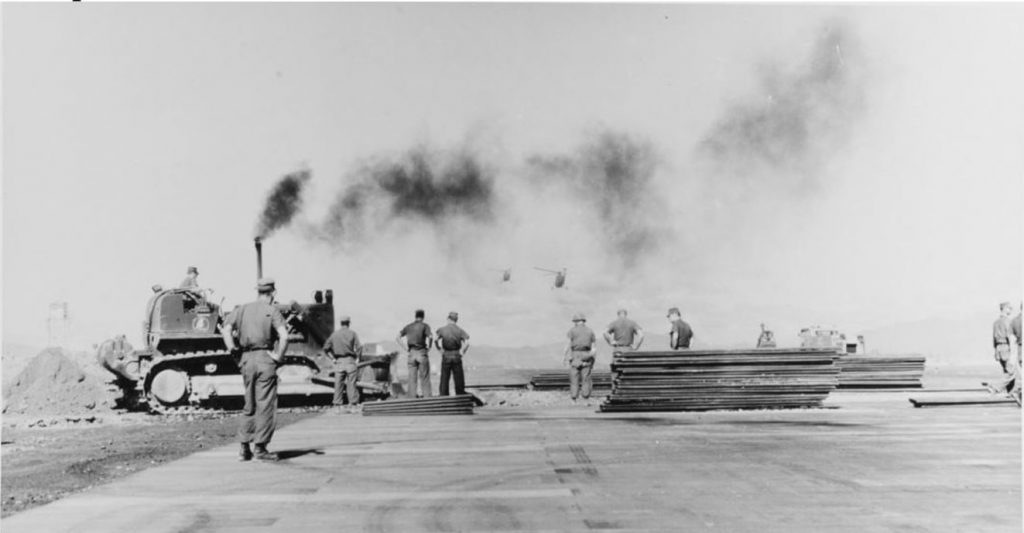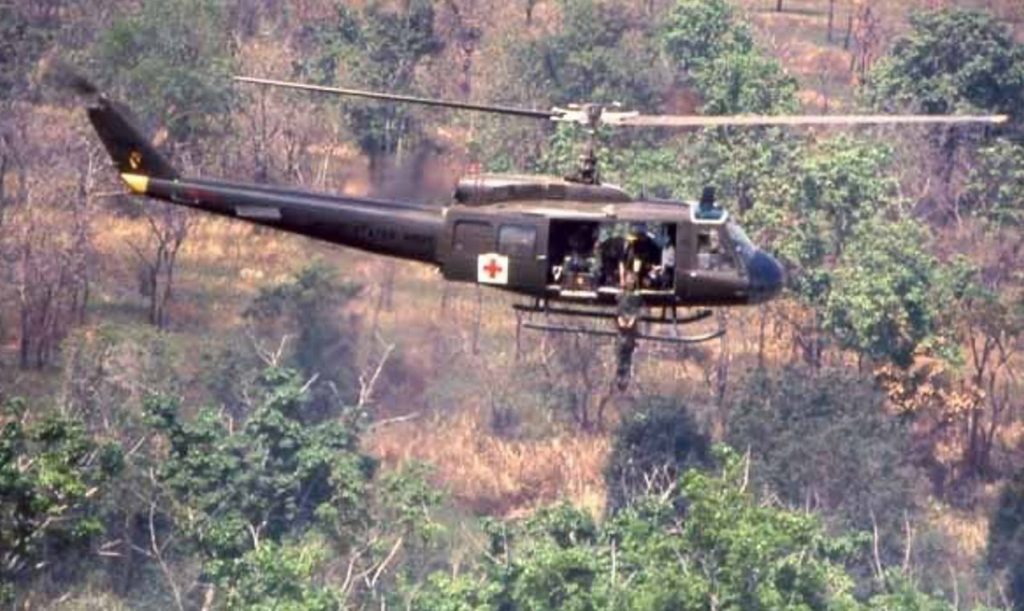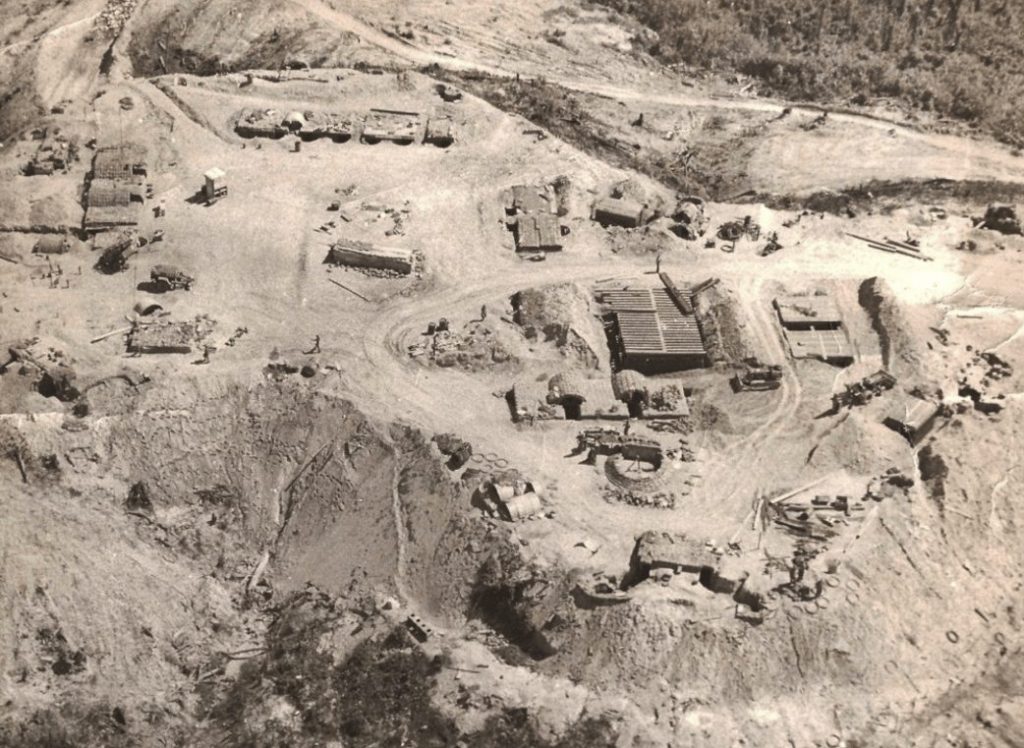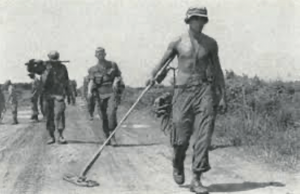
On Fire Base Rifle and along its access road work continued at a fair pace.
As time went on, we started to find some explosives along the road during sweeps and took harassing fire. Usually an RPG (Rocket Propelled Grenade) or a few AK (communist rifle) rounds would be fired at the sweep team and the NVA would quickly disappear. It was suggested that I “vary our times” for clearing the road by battalion. It took an hour and half to sweep the road each day and it had to be open by 0900.
BMNT (Beginning of Morning Nautical Twilight – when the first signs of light occur in the sky) was early but good light was about 0700 so we really could only vary by 30 minutes. The NVA knew we would be at a point sometime within a 30-minute span – I did not get how that would help. Division did get us some aerial support from the FLIR (forward looking infrared) aircraft. It could tell if the earth had been disturbed (different temp) along the road. Problem was we got the news rather late in the day – long after a sweep.
In any case, the harassment fire continued. One day when the other platoon was taking the sweep, the fire continued and did not break off. We could hear the firefight about a click (km) away. I went to the infantry support commander and asked that he help our guys out. He told me he had orders to defend the hill and could not spare a man but would call for air. My guys grabbed weapons and ammo and jumped in a ¾ ton dump truck and started down the hill on their own. By the time they got to the sweep team, the enemy had broken contact and a pink team (LOH and Cobra Gunship) was overhead.
We decided that the situation could not continue, and we needed to clear area away from the road. We asked for and received one Rhome plow D7 dozer and operator from Corps. It initially cleared jungle and trees back over 50 meters on each side of the road. It unearthed some RPG rounds and plastic explosive. The harassment stopped.
Then, we started to get sniper fire on the hill. As I walked with an NCO across the saddle one afternoon, I heard a loud pop above our heads followed by another from the ridge across from us. Turns out we were taking some rounds. A very weird experience to hear the double pops – explains why civilian witnesses often confuse the number of rounds fired. The first is the sound of the round’s sonic wave as it passes; the second the sound of the weapon firing. You never heard the one that got you. Again, a red team’s appearance silenced the enemy.
The infantry inserted a platoon on the ridge to clean out the harassers. They worked down a finger of land on the ridge and came to a steep cliff. When they started to go back, the point man hit a booby trap that blew off his legs. Apparently, what we called “trail watchers” (NVA who followed US units and harassed and wounded guys) were stalking the patrol. A MEDEVAC bird lowered a jungle penetrator hook and cable to get the wounded guy out. Then the cable would not retract. The pilot had to fly him daggling on the end of the cable to our hill and land next to him to pick him up. He was a sight and he bled to death in front of us from the stumps that were his legs moments before, even with the tourniquets.

The “watchers” had apparently placed more traps along the finger. We were asked to send a couple of guys over to rappel in and cut out a small Landing Zone to get the platoon out. I sent three of my best guys. They got enough cleared so that when the wind shifted in the afternoon a slick could get in and take everyone out in shifts. It made for a long afternoon.
We tightened security and reviewed our defensive positions. We did the usual “mad minute” to check fields of fire. A “mad minute” had every soldier on his weapon with tracer rounds included. (They lit up through trajectory as a coating burned off. Machine guns had every fifth round a tracer in their belts to adjust fire onto a target.) This would give a visible check of interlocking fires and show up dead spots in ravines, etc. where we would set claymores (These were a surface mine that was a sheet of plastic explosive under a layer of ball bearing like pellets. They gave quite a kill pattern.) We also used “fugas.” This was a thickened diesel fuel drum with an explosive charge behind it and a thermite grenade or flare (heat source) in front. It shot homemade napalm down the ravine when detonated. A final check for a blind spot was a hand-thrown grenade, and I carried a few. A soldier’s final protective fire line was usually to his right or left, as your front was covered by the guys next to you. This way you were not exposed to enemy direct fire, but you had to rely on your neighbor to clear your front. This “mad” practice also served the purpose of rotating ammo. We carried 21 or more loaded magazines for the M16 in ammo belts. Over time the magazines might rust, so they had a shelf life. Mad minutes were actually quite fun. Soon the next level of harassment started – mortar rounds. As I walked near the side of the hill a large explosion went off on the far side of our hill. The Infantry Captain yelled “incoming” and we all dove for cover. It was what amounted to a registration round to help adjust the enemy’s mortar attack. It was a rough technique to adjust fire, but sometimes effective I was told. I dropped into the nearest hole which turned out to be a garbage sump only a few inches deep. We heard the sound of several rounds going off and puffs of smoke from the disputed ridge. And then I picked up the most frightening sight, the actual mortar rounds in a long parabolic arch coming at us – like a fly ball to center field. The rounds got larger, and we lay as close as we could to the ground hoping they would miss. I felt like my buttons were keeping me too high off the ground. They landed on target, the hill, and the shrapnel crackled in the air and the ground shook, but miraculously nobody was hit. I had heard another attack described by an NCO when a Major was hit directly by a mortar and all that was left were his boots with some jell coming out – mortars could be very lethal. We were very lucky. Almost immediately the artillery on Fire Base Brick fired on the ridge. And as soon as possible, a Pink Team (LOH and Cobra gun ship) appeared. The LOH (small helo) pilot flew at treetop over the launch site trying to draw fire. Those guys were quite brave, to say the least. No fire was returned, so the accompanying Cobra shot up the area and took out what he could. Next, someone called in Air Force F4s and they fired rockets and dropped napalm and explosives. It was quite a show. We did not receive fire from the ridge again while we built FB Rifle.


By the time I made it to Vietnam I was a Captain so I ended up being a full-blown REMF. I have always wondered how I would had performed had I gotten there sooner. Wayne, at least you know that you were a fully capable junior officer in combat. God bless you and thank you for your service.
And who said engineers were wusses?
You guys took your share of “sherlock”.
Nice write up, Wayne.